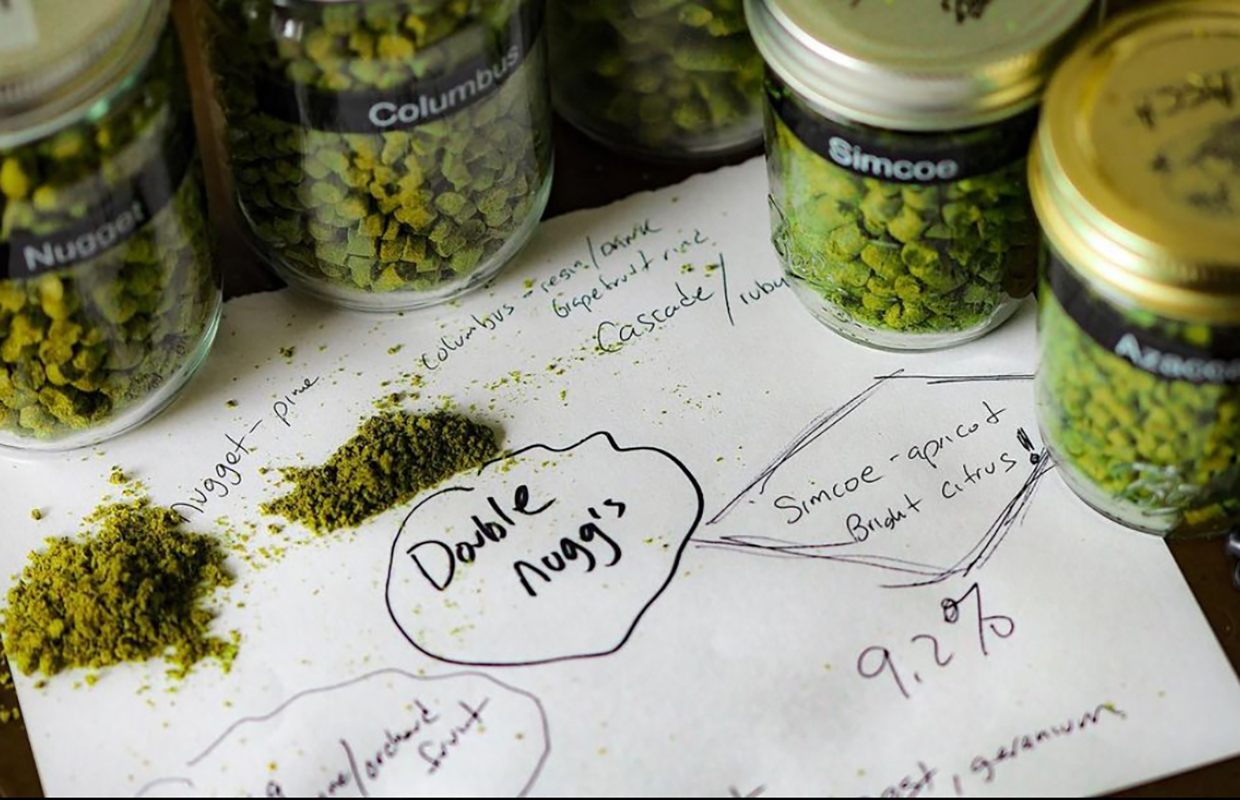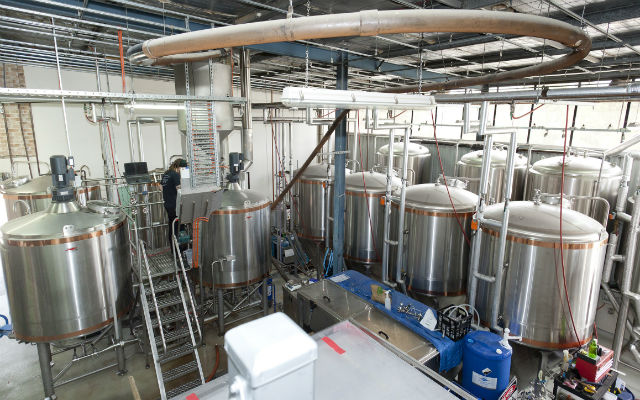
Some breweries have it, others don’t. Is there any real benefit to offering merchandise at your brewery? Can merchandise make you money, or should it just be used for advertising purposes? A couple of breweries offered their insights on their merchandise and what it does for their breweries.
pFriem Family Brewers in Hood River, Oregon uses an entire wall to display a variety of goodies, stamped with the pFriem logo, including t-shirts, beanies, tank tops, beer glasses, growlers, mugs, ball caps, and even patches.
The “Bear’s Den” is a dedicated retail space in the brewery, and that’s where most of the sales happen: inside the taproom, as opposed to online. After all, it’s only natural to want to leave with a souvenir after a good experience at the brewery.
Of course, though, beer is king in a brewery, and so pFriem doesn’t do much on the advertising side with the merchandise.
“We have done very little to advertise our merchandise,” said Michelle Humphrey, Marketing Manager. “Sometimes we’ll make social posts about new limited merch or put it in our newsletter on occasion. We have paid for our Black Friday Sale on social but it was a very small campaign.”
In terms of money making, there is a profit margin associated with the sales, but the sales team often gives away merchandise in events at the brewery, which obviously lowers that margin a bit.
“It kind of evens out in the end,” Humphrey said.
pFriem works on keeping plenty of options in stock all year round, so doing inventory is a continual process.
The top seller at pFriem just goes to show that it can’t hurt to keep it simple. The unisex badge t-shirt is a bestseller, and for good reason.
“It represents our brewery the most because it is the artwork that people see on our labels,” Humphrey said. “The tee style itself is pretty generic and can fit a wide range of people’s clothing taste.”
So if merchandise itself isn’t a money-maker for pFriem, is it impressionable enough to be worth it? In a global ad impressions study which demonstrated the value and effectiveness of promotional products to consumers, promotional pens and drinkware are most widely owned by consumers across the US, with nearly 9 in 10 reporting they owned each. 80% of consumers reported owning a promotional t-shirt, and Millennials report having five promotional t-shirts.
Drinkware seems to outweigh it all, with a whopping 78% of consumers owning some type of drinkware, and 84% of those are baby boomers.
The average household, according to the study, has 30 promotional products.
Fort George Brewery in Astoria, Oregon recently remodeled its retail space in the main pub which helped to improve sales. It’s merchandise has evolved over the past two years, working with Farm Fresh out of Northern California for organic, US-made cotton shirts.
Just like pFriem, the top seller at Fort George is a simple t-shirt with the brewery’s logo (“It’s the most comfortable T-shirt in the world, washes really well and holds up under the demands of service industry work; a lot of employees have multiples,” said Merch Manager Kirsten Pierce), as well as black hats. According to the aforementioned survey, more than two thirds of people own promotional headwear, and one third of men wear their promo hat weekly or more often.
“I’ve never considered the merch we move out of the pub to be about advertising,” Pierce said. “For me — when I was a server and now as merch manager — it has always been about offering our customers something really cool to take home with them. But it is nice to walk around town and see a bunch of Fort George gear on the street.”
Fort George set a goal at the beginning of 2019 to hit 3% of net restaurant sales by the end of 2024, and so far, they’re ahead of schedule to meet that goal.
Offering sustainably-made clothing doesn’t hurt either, and it’s often a selling point at the brewery.
“As we continue to offer higher quality, more sustainable and ethically produced merch, our direct cost/price margins do go down a little but our sales have increased and selling higher value items means that the labor cost to get them on the shelves is a smaller and smaller percentage,” Pierce said.
The brewery also does small runs of “art Ts” every few months, shirts designed by Fort George’s own staff.
“We’re really lucky that the coast — and Astoria in particular — is full of amazing artists and artisans,” Pierce said. “A lot of our art comes from in-house. We have a bunch of really talented artists and designers who moonlight at the Fort as bartenders, brewers, and line cooks.”
On the same boat as pFriem, the majority of Fort George’s sales are at the brewery itself, rather than online. As of right now, they don’t offer year-round exclusive stuff online, but, “Every year we load up the sales pages for Cyber Monday in November and move masses of backstock and holiday exclusives,” Pierce added.
Though online sales aren’t a priority at the moment, giving the online store more attention is on the docket for 2020.






Be the first to comment